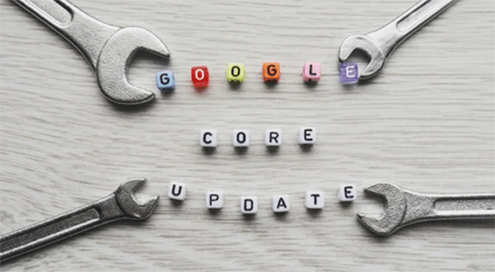In 2021, we’re more than just facing new-normal care for the coronavirus pandemic and the ensuing vaccination programs in many parts of the world. There is going to be a massive change in the way Google ranks your web page, too. Forget about the traditional loading speed and mobile-friendliness as factors to rank a page. Google’s new algorithm will focus on the user’s experience while browsing the page. It turns out that user experience is not only defined by the page’s loading speed and mobile-friendliness. There are other more important factors that a web administrator and developer must take into account.
Of course, Google recognizes that the past year has been challenging for site owners. In turn, the rollout of the changes will be done in a manner that will allow website owners to keep up with them. Google announced in the middle of last year what they have to do. It also provides tools to get website owners started. However, as much as the search engine giant assures websites that the algorithm will not change overnight, it’s essential to prepare your website as soon as the new ranking factors take place.
Core Web Vitals
One of the main changes of the algorithm depends on the core web vitals optimization of the page in question. There are three factors that Google will check. This will measure the visual loading, interactivity, and visual stability of the page.
The largest contentful paint (LCP) refers to the appearance of the page above the fold. It measures how quickly the main elements and content of the above-the-fold page loads. To help speed that up, Google suggests preloading, which will tell the browser to prioritize fetching resources for the above-the-fold elements.
The second core web vitals metric is the first input delay (FID), which causes users to wait for the browser to respond when they click on a link. The waiting time is attributed to the JavaScript code, which needs splitting to resolve long tasks. Once the activities no longer have to occur under a single task because they have been broken into smaller chunks, the browser will be more responsive.
Lastly, the cumulative layout shift (CLS) refers to the movement of the page’s layout as the page elements load. Did you accidentally click on a visual element because it moves around while the page loads? It can be frustrating for some web users. To avoid this, you have to make sure that there’s a dedicated space for these elements to load into. Once you have that, the visual layout will hardly move even as the rest of the elements load.
Mobile-friendliness
Since 2016, mobile-friendly websites have become a hit with web users. The mobile-friendliness of a site is measured in different ways, but the most important is how the page’s visual elements look on mobile compared to the desktop computer. Users should not have to zoom in and out of the content of the page to see them. At the same time, the mobile version of your website should adjust to having the most important content appear on the main page of the site’s mobile version.
Website Security
Even before this algorithm change, Google considers website security an important metric. Web users are also more aware of the dangers of the internet and how they are putting their safety at risk by visiting unsecured websites. The main security issues are malware, deceptive content, phishing, and unwanted software. Google’s developer tools will alert you of these security issues and allow you to fix them so that they won’t affect your website.
HTTPS
If you are going to ask web visitors to fill out forms or transact financially on your site, make sure that they do so over HTTPS. Embedding is an important factor in website security. Web users are aware of this, too, as they usually check whether the websites that they visit have that padlock icon and HTTPS connection.
Intrusive Interstitials
Websites tend to have interstitials that disrupt important on-page content. This is often frustrating for web users and thus, affects their overall browsing experience. You may want to redesign the pop-up ads and rethink where interstitials are. Users shouldn’t have to close them to see the main content of your web page.
Audit your web pages as early as today. You lose nothing by keeping up to date with the changes you need to make on your website. You gain everything by being proactive in ensuring your website stays relevant and provides an excellent user experience.




